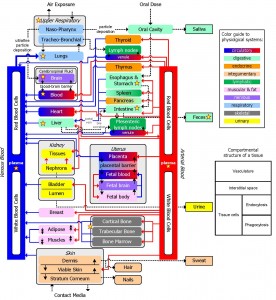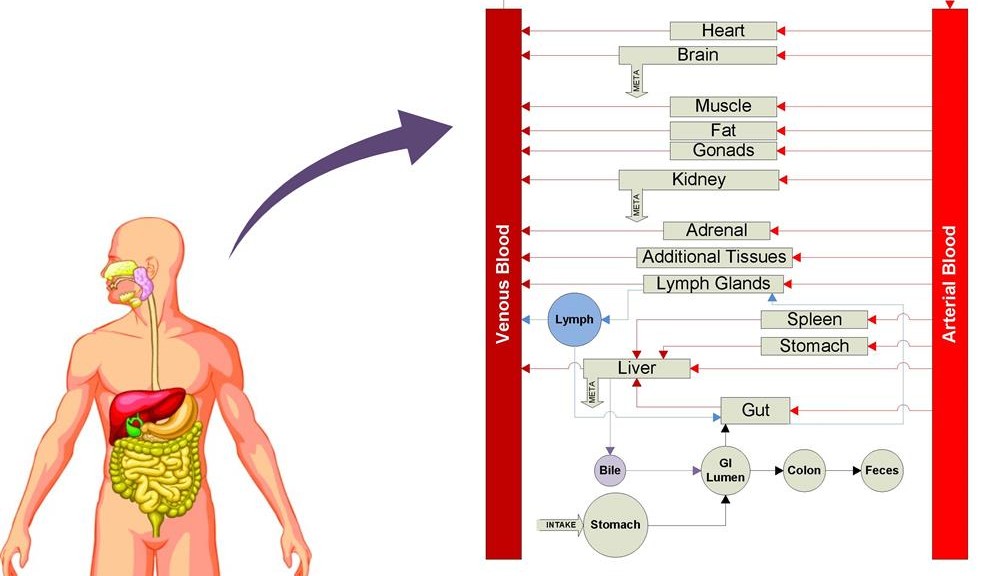PBPK Modeling
 Physiologically Based Pharmacokinetic (PBPK) Modeling is being applied more and more to provide whole-body level insights to chemical absorption-distribution-metabolism-extraction (ADME) within the body. PBPK models (often referred to as PBTK models when applied to toxic chemicals) are widely used in the pharmaceutical industry for Model Based Drug Development as well as for chemical risk analysis by regulatory agencies like the EPA and the FDA.
Physiologically Based Pharmacokinetic (PBPK) Modeling is being applied more and more to provide whole-body level insights to chemical absorption-distribution-metabolism-extraction (ADME) within the body. PBPK models (often referred to as PBTK models when applied to toxic chemicals) are widely used in the pharmaceutical industry for Model Based Drug Development as well as for chemical risk analysis by regulatory agencies like the EPA and the FDA.
Historically, PBPK models were first developed by chemical engineers who saw the human body as analogous to the network of pipes and reactors which they were accustomed to. PBPK models bring together knowledge of biology, chemistry, mathematics to often produce models of immense complexity.
Specific projects utilizing PBPK models:
- PBPK modeling of zearalenone and its metabolites in human: The Jersey Girl Study
- PBPK modeling of α-tocopherol (Vitamin E)
- PBPK modeling of manganese in vulnerable populations
Figure reference: Xue et al., Probabilistic Modeling of Dietary Arsenic Exposure and Dose and Evaluation with 2003-2004 NHANES Data, Environ. Health. Perspect. (2009); 118, 345-350.
